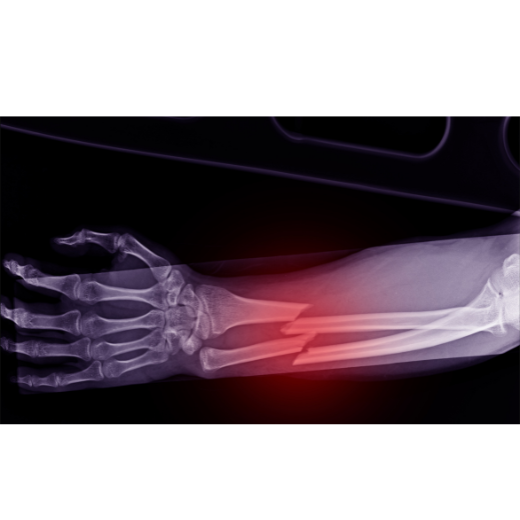
How to Identify Early Signs of Stress Fractures
Stefanie Moser, Athletic Therapist and Massage Therapist

Stress fractures are one of the most common injuries I encounter in athletes and active individuals. They often result from repetitive activities that overload the bones, like running, jumping, or intense training sessions. Catching a stress fracture early can prevent it from worsening and help you get back to your activities sooner. Here’s what you need to know about identifying the early signs of stress fractures.
What is a Stress Fracture?
A stress fracture is a small crack or severe bruising within a bone, often caused by repetitive stress or overuse. Unlike acute fractures, which result from a single traumatic event, stress fractures develop gradually over time. They commonly occur in weight-bearing bones, such as the tibia (shinbone), metatarsals (foot bones), and femur (thighbone).
Early Signs to Watch For
Identifying stress fractures early can save you from prolonged recovery times. Here are the key signs to look out for:
1. Localized Pain
- Pain from a stress fracture typically starts as a mild discomfort that worsens with activity and improves with rest. Over time, the pain becomes more persistent, even during everyday activities.
2. Tenderness to Touch
- The affected area may feel tender when you press on it. This tenderness is often localized to a small, specific spot rather than a generalized area.
3. Swelling or Mild Inflammation
- You might notice slight swelling or redness around the site of pain. While not as pronounced as with other injuries, it’s a sign that your body is responding to micro-damage in the bone.
4. Increased Pain with Activity
- Activities like running, jumping, or walking may exacerbate the pain. Pay attention if your usual workout routine suddenly feels more painful or difficult to complete.
5. Altered Movement Patterns
- To compensate for the pain, you may unconsciously change how you move, such as limping or avoiding putting weight on the affected limb. This is your body’s way of protecting the injured area.
Risk Factors
While anyone can develop a stress fracture, certain factors increase your risk:
- Overtraining or Sudden Increases in Activity
- Inadequate Footwear
- Poor Nutrition, Particularly Low Calcium or Vitamin D
- Biomechanical Issues, Like Flat Feet or High Arches
- Female Athlete Triad (Energy Deficiency, Menstrual Irregularity, and Low Bone Density)
What to Do If You Suspect a Stress Fracture
If you think you might have a stress fracture, follow these steps:
1. Stop the Activity
- Continuing to train or compete can worsen the injury and prolong your recovery. Rest is critical at this stage.
2. Seek Professional Advice
- Consult a healthcare professional, such as an athletic therapist or physiotherapist, who can assess your symptoms and refer you for imaging tests like X-rays or MRIs if needed.
3. Follow a Rehabilitation Plan
- Recovery typically involves rest, modified activities, and a gradual return to training. A professional can also guide you in addressing underlying factors, such as biomechanics or training errors.
Prevention Tips
Preventing stress fractures is always better than dealing with one. Here’s how to reduce your risk:
- Gradually Increase Training Intensity: Avoid sudden spikes in activity.
- Wear Proper Footwear: Ensure your shoes provide adequate support and cushioning.
- Prioritize Nutrition: Maintain a balanced diet rich in calcium and vitamin D for bone health.
- Incorporate Strength Training: Strengthen muscles to better support your bones.
- Listen to Your Body: Rest when you feel pain or discomfort.
Final Thoughts
Stress fractures can be frustrating, but with early identification and the right care, you can recover fully and return to your activities stronger than ever. Pay attention to your body’s signals, and don’t hesitate to seek help if something feels off. If you’re experiencing any of the symptoms mentioned above, I’m here to help you navigate your recovery journey.
About the Author:
Stefanie believes that balancing the body will provide optimal function and diminish pain. She feels that this can best be accomplished through patient inclusion and education throughout the rehabilitative process and wellness maintenance.
For more information about Stef, click here

